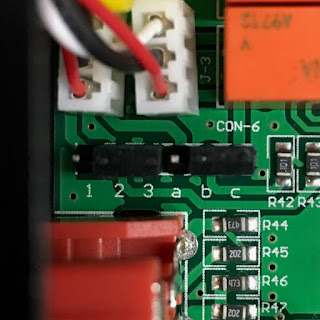This installment is long overdue since I got distracted by a flea market find, a Yamaha T-2 FM tuner, which was aligned to factory specs by Punker X, highly recommended tuner tech! Yes, I am eating my words from this past post since I've been enjoying WRTI, WPRB, WXPN, amongst others. FM broadcasts just sounds more analog with a human DJ than streaming from the internet.
But I haven't ditched my Raspberry Pi 3B+ set up since it has its purpose.
If you are looking for a DAC to hook up to a CD transport to playback Redbook CDs STOP and GO there! However, if you need an affordable DAC for your Raspberry Pi, laptop or server, you may proceed.
Cirrus Logic CS4398

Both these units use the Cirrus Logic CS4398 chip, a well-respected Delta-Sigma type DAC that was introduced in 2003. But it is the implementation of the DAC chip which sets these two units apart.
Listening tests were done using music files mastered to CD Redbook standards. These include live concerts, CD projects and music from favorite CDs I transferred to a USB thumb drive. Streaming sources were internet radio stations via the latest version of moOde audio or Volumio loaded to a Raspberry Pi 3B+ with an Allo DigiOne HAT. I also listened using USB connections and arrived at the same conclusion.
The Topping D30 is a highly acclaimed DAC and measures great according to meter readers. It sounds pleasant, I didn't hear anything objectionable. But compared to the Xiang Sheng DAC-01A, the D30 sounds dry and lifeless. Maybe that's what others will deem as accurate?
A hundred and twenty something dollars buys a neatly stuffed PCB with Wima capacitors in the audio stage. The PCB card slides into a nice anodized aluminum case. But Topping only provided an SMPS wall wart. Hmmm...
For about the same amount of money the Xiang Sheng DAC-01A is built on a solid metal chassis. It sports a real power supply based on an R-Core power transformer that provides an 80VDC rail for the 6N3/5670/WE396A tube buffer/cathode follower blocked by Wima coupling caps.
In spite of the decent quality workmanship, the blue LED pilot light on my unit was flickering since I got it and died a couple days later. But it was an easy fix.
Since I was planning to use it mainly as a DAC, I bypassed the volume control by setting the two jumpers to connect 2+3 and b+c. To enable the volume control, connect 1+2 and a+b. With this set up, it can also function as a stand alone line stage preamp.
The only upgrade I did to the DAC-01A was replace the stock 6N3 tube with a US made NOS 5670 (about $7 a pop), which gave a more refined sound. I regret unloading my 70s date code stash of WE396A/2C51s years ago...I can't afford to buy those back.😞 Anyway, I don't think it would have made the sound 10 times better.😉
Sonically, the DAC-01A trounces the D30. This unit sounds enticing. Maybe others will consider this colored because of the tube buffer. But to my ears it is A LOT more musical! Music IS THE BIG picture folks, leave the details for laboratory analysis.😄
The unit has two sets of outputs; the normal out, which bypasses the tube buffer, gives up a bit of the dignified poise but still sounds more authoritative than the D30. Although I'm pretty sure the tube output stage will be a delight to pick on by scope jockeys. 😄
BTW, did I mention it also has a headphone output?
Coda
Inasmuch as I laud the Xiang Sheng DAC-01A as great value for the money, if you're in the market for a DAC to playback Redbook CDs, I'd persuade you to hit the flea markets and thrift stores to hunt for an ancient TDA1541-equipped CD player. Even an early 90s CD player with the cheaper TDA1543 chip will give more musical satisfaction than the DAC-01A. However, if you need a Hi-Res capable DAC for the Raspberry Pi music player, computer or server, this is hard to beat at this price point.




























